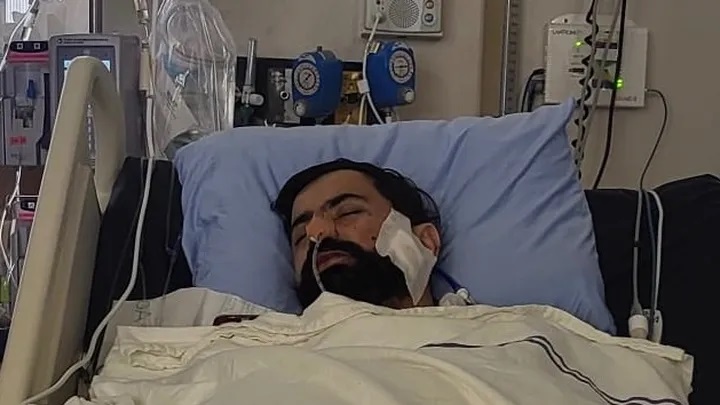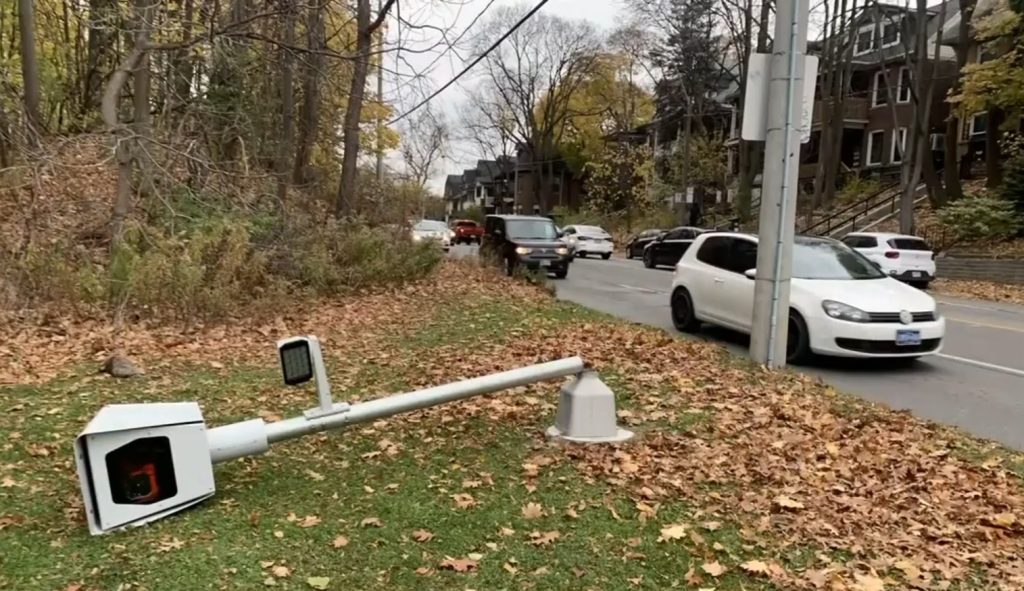Rebel group launches offensive on Syria’s largest city Aleppo
Posted July 22, 2012 3:45 pm.
This article is more than 5 years old.
BEIRUT – A new rebel group boasting some 1,000 fighters launched an operation Sunday to capture Syria’s largest city, Aleppo, while government troops using helicopter gunships and heavy artillery rolled back opposition gains in the capital Damascus.
The spread of fighting into a second major metropolis displayed the rebels’ growing confidence even though they still can’t hold ground against the government’s heavy weapons, pushing Syria’s civil war toward a new phase of destructive urban combat.
On Sunday, however, a group calling itself the “Brigade of Unification” announced in an online video that it was launching an operation in Aleppo, Syria’s most populated city and a key commercial hub that has remained relatively quiet throughout the uprising.
“We gave the orders to march on Aleppo with the aim of liberating it,” says Col. Abdul-Jabbar Mohammed Akidi, one of the group’s leaders.
The push into Aleppo follows weeks of high-level military defections, soaring death tolls, fierce fighting near President Bashar Assad’s seat of power and a bomb blast that killed four top players in his regime’s efforts to crush those seeking to end his rule. Rebels also captured several border crossings with neighbouring Iraq and Turkey. The opposition’s momentum put the regime on the defensive for the first time in the 16-month conflict.
But while the gradual swelling of their ranks and increasing organization have allowed them to push into major cities, they remain largely unable to hold ground against Assad’s forces and helpless before his helicopters.
The week’s violence pushed the death toll for the uprising above 19,000, according to the Britain-based Syrian Observatory for Human Rights. The group said July is likely to be the conflict’s deadliest month so far, with more than 2,750 people killed in the first three weeks — nearly as many as in the previous month.
More than 100 people were killed Sunday, it said, including at least 24 government troops.
The escalating fighting is also feeding fears that Syria’s war could spill across borders and spark a regional conflagration. Assad’s regime is a bridge between Iran and the Lebanese Shiite militant group Hezbollah. On the other side, the uprising is largely driven by Syria’s Sunni Muslim majority, which has more natural links with the region’s Sunni nations such as Saudi Arabia.
Complicating matters, almost all hate Israel — the closest U.S. ally in the Middle East.
On Sunday, Israeli Prime Minister Benjamin Netanyahu said he feared that chaos following Assad’s fall could allow Hezbollah, which seeks Israel’s destruction, to access Syria’s chemical weapons.
“That this is something we’ll have to act to stop if the need arises,” he told Fox News Sunday.
No evidence has emerged of Hezbollah involvement in Syria’s unrest.
King Abdullah of Saudi Arabia announced a national campaign to collect support for “our brothers in Syria.” Saudi Arabia and other nations have spoken positively of arming the rebels, though no country is known to be doing so.
Syria’s uprising began in March 2011 when the government violently tried to quash protests calling for political reform. As dissent spread and the death toll rose, scores of rebel groups formed to fight government troops, and the conflict evolved into a civil war.
Throughout the conflict, Syria’s rebels have been outgunned by Assad’s army, fully equipped with a modern arsenal largely bought from Russia. Rebel brigades are mostly local groups with light arms and little co-ordination outside of their immediate area.
The new rebel group announced its formation in another video this week that showed about 1,000 fighters, most wielding rifles, wearing camouflage and chanting “God is great!” — a Muslim battle cry.
In that video, a spokesman lists more than a dozen rebel groups from towns near Aleppo that have joined.
Little is known about the group, and messages sent to its Facebook page and YouTube account were not immediately answered. Bu the force in the video is much larger than that of other known rebel groups.
In Sunday’s video, Akidi called on government troops to defect to the opposition and said fighters would protect members of Assad’s minority Alawite sect.
“Our war is not with you, but with the Assad family,” he said.
Fighting broke out in neighbourhoods around Aleppo, according to the Observatory and Aleppo-based activist Mohammed Saeed, but focused around the northeastern neighbourhood of al-Sakhour and the southwestern Salaheddine area.
“Aleppo is witnessing serious street battles,” Saeed said, with fierce clashes on the road leading to the international airport.
One video posted online Sunday shows dozens of cars and trucks full of rebel troops heading toward the city before dawn. Other videos show them blazing through a neighbourhood full of cheering bystanders and shooting at a truck at a regime checkpoint until it bursts into flames.
Other videos show tanks driving down a main boulevard and rebels hiding behind a wall while gunfire and loud booms are heard in the background.
Syrian state TV said the army was hunting down “terrorists” — the government’s shorthand for the rebels — and had killed a large number of them.
It was not possible in independently confirm government or activist claims, and one Aleppo resident reached by phone said fighting was still confined to small parts of the city of 3 million.
Still, while rebels may attack government checkpoints and convoys, they lack to arms to strike helicopters and can do little against tanks — weapons the regime is using more and more frequently.
In Damascus, the government appeared to have turned the tide against rebel advances over the last week. The Observatory said the army had sent troops and tanks to besiege a rebel-held part of the southwestern Mezzeh neighbourhood and that dozens of people were wounded in shelling.
Regime helicopters fired heavy machine-guns at other rebellious areas while troops carried out arrest raids, leaving at least four people dead in the northern district of Barzeh.
State TV denied government forces used helicopters in Damascus and said the capital was calm as troops mopped up remnants of the “terrorists.”
Reflecting the see-saw nature of the fighting, rebels captured one international border crossing Sunday while apparently losing another.
A video posted online Sunday showed about a dozen gunmen raising the opposition flag on Syria’s Bab al-Salameh crossing with Turkey. It was the second Turkish crossing captured in a week.
But Syrian government forces retook control of the Rabiya crossing with Iraq after rebel forces pulled out, Iraqi military officials said. Further south, the sounds of battle could be heard from the larger Bukamal crossing, which rebels seized on Thursday. Late Sunday, it was unclear who controlled the crossing.
Assad himself briefly appeared on state TV on Sunday receiving his new army chief of staff, Gen. Ali Ayyoub, whose predecessor was killed in Wednesday’s bomb attack. Assad has not spoken publically since the attack and has only appeared on TV twice.
Reflecting the unrest in the capital, Malaysia said it was closing its embassy and evacuating its citizens, while Italy ordered of its citizens to leave the country because of the “progressive deterioration” of the situation.
___
Associated Press writers Suzan Fraser in Ankara, Turkey, and Sameer A. Yacoub in Baghdad contributed to this report.








